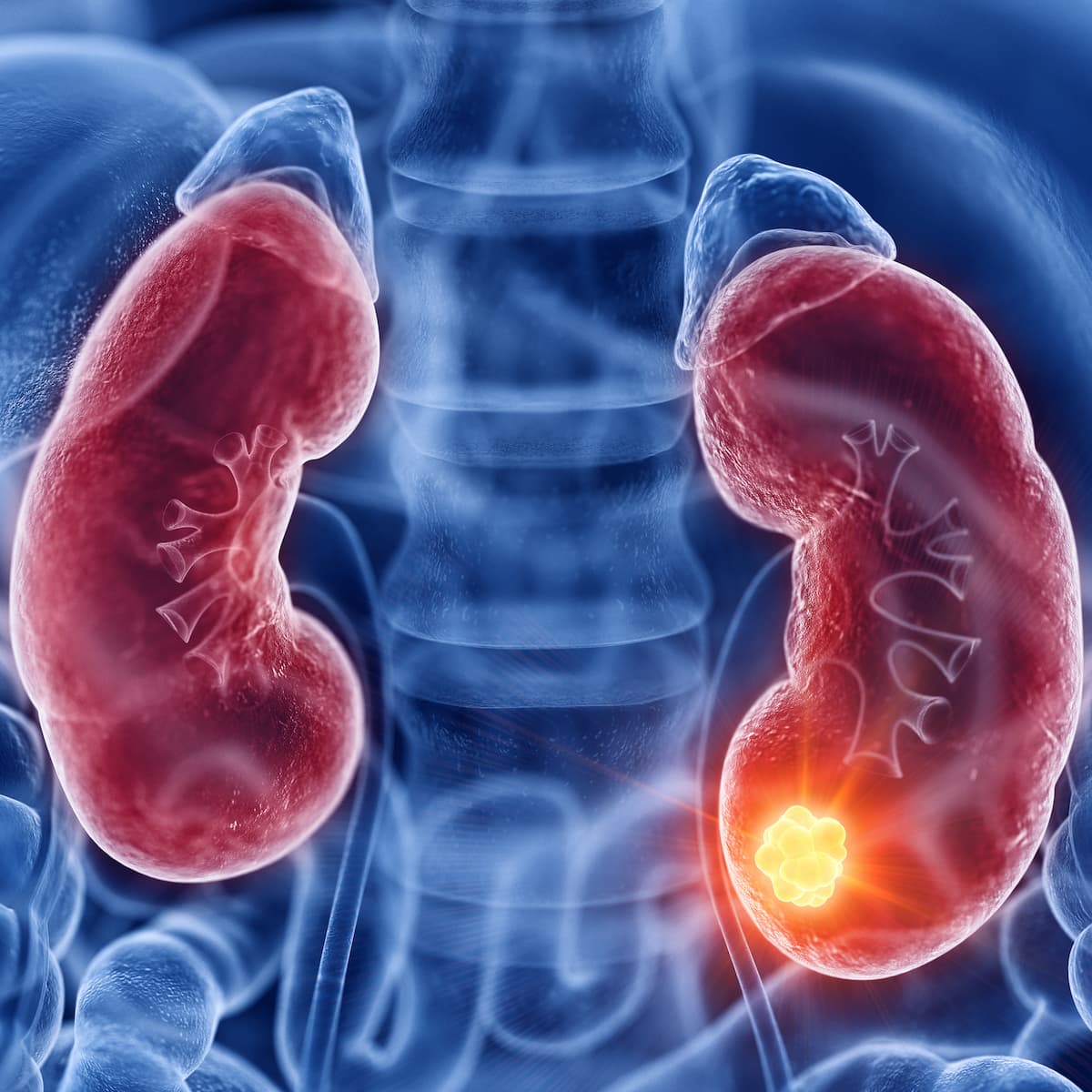Pembrolizumab Combo Exhibits Sustained Clinical Benefit in Advanced RCC
Additional correlative data and further prospective clinical investigations are needed to inform biomarker-directed advanced RCC treatment.
Efficacy data from the trial revealed that the median overall survival among patients treated with the pembrolizumab combination was 47.2 months vs 40.8 months with sunitinib.

The combination of pembrolizumab (Keytruda) and axitinib (Inlyta) displayed sustained clinical benefit vs sunitinib (Sutent) for the treatment of patients with advanced clear cell renal cell carcinoma (ccRCC), according to long-term efficacy and prespecified exploratory findings from the phase 3 MK-3475-426/KEYNOTE-426 trial (NCT02853331) published in Nature Medicine.1
Efficacy data from the trial revealed that the median overall survival (OS) among patients treated with the pembrolizumab combination was 47.2 months (95% CI, 43.6-54.8) vs 40.8 months (95% CI, 34.3-47.5) with sunitinib (HR, 0.84; 95% CI, 0.71-0.99). Additionally, the respective 36-, 48-, and 60-month OS rates were 62.6% vs 53.8%, 49.2% vs 45.0%, and 41.9% vs 37.1%. Subgroup benefits included those younger than 65 years (HR, 0.74; 95% CI, 0.59-0.92), female patients (HR, 0.63; 95% CI, 0.46-0.88), and those with a poor International Metastatic RCC Database Consortium (IMDC) risk category (HR, 0.51; 95% CI, 0.33-0.80).
The progression-free survival (PFS) in the investigational arm was 15.7 months (95% CI, 13.6-20.2) and 11.1 months (95% CI, 8.9-12.5) in the investigational arm (HR, 0.69; 95% CI, 0.59-0.81). The respective 36-, 48-, and 60-month PFS rates were 29.2% vs 16.0%, 20.9% vs 11.9%, and 18.3% vs 7.3%. Additionally, subgroup analysis showed benefit in those younger than 65 years (HR, 0.66; 95% CI, 0.54-0.80), female patients (HR, 0.65; 95% CI, 0.48-0.90), those with an intermediate (HR, 0.71; 95% CI, 0.57-0.88) or poor IMDC risk category (HR, 0.51; 95% CI, 0.32-0.82), and those with a combined positive score (CPS) of 1 or greater (HR, 0.66; 95% CI, 0.53-0.82).
Regarding response data, the confirmed objective response rate (ORR) was 60.6% in the investigational arm vs 39.6% in the control arm. Furthermore, the median duration of response (DOR) in the respective arms was 23.6 months (95% CI, 1.4+ to 68.6+) and 15.3 months (95% CI, 2.3-68.3). Additionally, the respective 36-, 48-, and 60-month DOR rates were 37.5% vs 29.0%, 28.4% vs 20.8%, and 26.0% vs 14.4%.
“In conclusion, results of the present analysis showed sustained OS, PFS, and ORR benefit of the use of pembrolizumab plus axitinib compared with sunitinib monotherapy. An extensive biomarker analysis adds to the increasing amount of information on biomarkers in patients treated with immunotherapy-based combinations,” Brian I. Rini, MD, professor of medicine in hematology and oncology at the Vanderbilt-Ingram Cancer Center in Nashville, Tennessee, wrote in the publication with study coinvestigators.1 “Although the analysis showed potential clinical utility of some RNA signatures in identifying patients who are likely to benefit the most from each treatment, additional correlative data and further prospective clinical investigations are needed to inform biomarker-directed treatment of patients with advanced or metastatic RCC who are being considered for combination treatment with antiangiogenic and PD-1 inhibitor therapies.”
The phase 3 trial enrolled patients with newly diagnosed stage IV or recurrent ccRCC not previously treated for advanced disease. They were randomly assigned 1:1 to receive pembrolizumab at 200 mg once every 3 weeks for up to 35 cycles plus axitinib at 5 mg orally twice daily (n = 432) or sunitinib at 50 mg orally daily for 4 weeks on and 2 weeks off (n = 429). Treatment continued in the absence of disease progression, unacceptable toxicity, or the physician/patient decision to discontinue; in the combination arm, one drug could be continued if the other was discontinued due to toxicity.
Patients in the combination and control arms had a median age of 62.0 years (range, 30-89) vs 61.0 years (range, 26-90), were mostly men (71.3% vs 74.6%), and resided outside of North America or Western Europe (51.4% vs 51.7%). Most patients had IMDC intermediate disease (55.1% vs 57.3%), no sarcomatoid features (54.2% vs 55.7%), and a PD-L1 CPS of 1 or greater (56.3% vs 59.2%). The majority of patients had 2 or more organs with metastases (72.9% vs 77.2%), lung metastases (72.2% vs 72.0%), and previous nephrectomy (82.6% vs 83.4%).
The coprimary end points of the trial were OS and PFS per RECIST v1.1 criteria by blinded independent central review (BICR). The key secondary end point was ORR per RECIST v1.1 criteria per BICR, and additional secondary end points included disease control rate, DOR, and safety.2
References
- Rini BI, Plimack ER, Stus V, et al. Pembrolizumab plus axitinib versus sunitinib for advanced clear cell renal cell carcinoma: five-year survival and biomarker analyses of the phase 3 KEYNOTE-426 trial. Nat Med. Published online August 1, 2025. doi:10.1038/s41591-025-03867-5
- Study to evaluate the efficacy and safety of pembrolizumab (MK-3475) in combination with axitinib versus sunitinib monotherapy in participants with renal cell carcinoma (MK-3475-426/KEYNOTE-426). ClinicalTrials.gov. Updated November 18, 2024. Accessed August 21, 2025. https://tinyurl.com/25uu3hyr